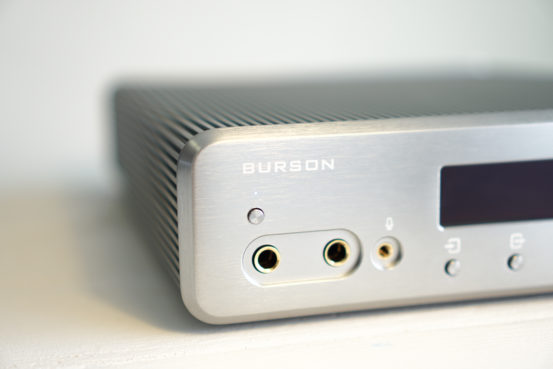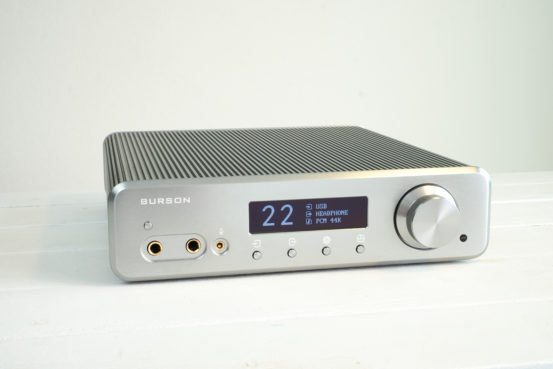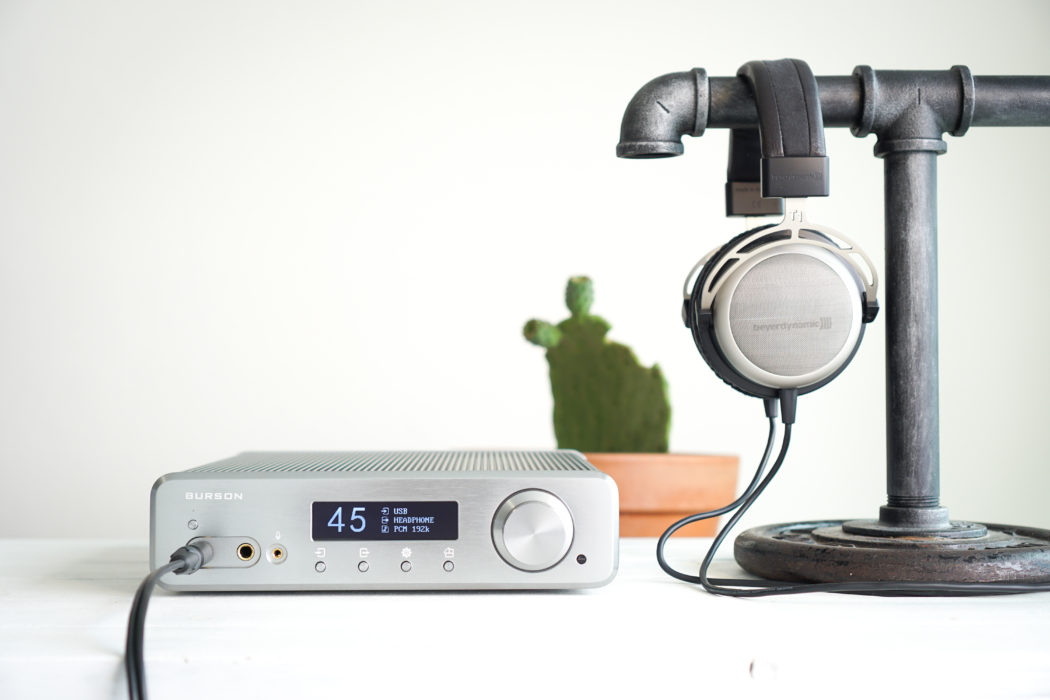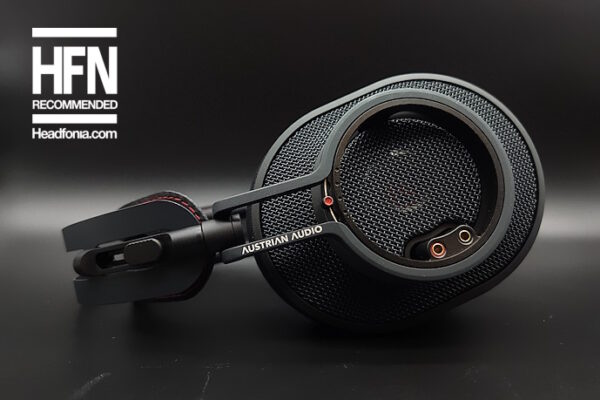Headphone Performance, Pairing and Powering
[responsivevoice_button]
I think it’s fairly safe to assume that if you’re considering buying a Conductor 3, you’re looking at it with the intent of it a) replacing your other gear with it, and it being your sole source/amplifier, and b) staying in your possession for a very long time. I cleared off my desk, and hooked-up the Conductor 3 to my music library with this framework in mind.
On paper, the Conductor 3 has enough power to power, well, just about anything. And, in all likelihood, any headphones that are likely to be made in the future. Burson provides the following power ratings from the 6.3mm headphone jack:
| Impedance | Power |
| 16 Ohm | 7.5W |
| 32 Ohm | 5W |
| 100 Ohm | 1.75 |
| 150 Ohm | 1.16W |
| 300 Ohm | 0.58W |

That is a lot of power. Low sensitivity/impedance planar owners (especially vintage Hifiman owners) take note, this ought to be a terrific pairing. That’s also a terrifying amount of power to be sending into sensitive drivers, so IEM owners…I’m afraid it’s not going to be a perfect match. A quick test with the 5-ohm Audio Technica ATH-IEX1 made them hiss very loudly at ‘00’ volume, and only had two usable notches of volume on ‘low’.
No, the Conductor 3 is definitely a full-size, desktop headphone amplifier and a big, burly one at that. In fact, I found that there was a noticeable noise-floor on low-impedance full-sized headphones as well. I could hear a low-level ‘hiss’ on 32-ohm Grado PS500e and GH1’s, as well as with the Meze 99 Classics. It certainly wasn’t noticeable at all with music playing, but important to note if you plan on using low-impedance, dynamic driver headphones. However, the Conductor 3 has operates with a totally silent background with 300-ohm Sennheiser HD600/650 and ZMF Eikons, 600-ohm Beyerdynamic T1’s, and even the 13-ohm MrSpeakers (now ‘Dan Clark Audio’) Aeon Flow Open.
In terms of power requirements, I used the Conductor in ‘low’ power mode with all the aforementioned headphones, and I never needed to go much higher than ‘40’ on the volume dial. I simply didn’t need the additional power and enjoyed the additional control and flexibility in volume attenuation on ‘low’. I do have a number of headphones with balanced termination (as I’m sure you do), so perhaps you might be a little disappointed that a potential ‘end-game’ DAC/amp can’t connect to your fancy XLR or 4.4mm cables. And frankly, I can understand that. With the power the Conductor 3 has on tap from its single-ended outputs, this isn’t a power complaint, but rather one of convenience. Sure, adapters are a thing, but I’d enjoy the ‘last box I ever buy’ to happily connect to all my cables for my high-end headphones. But…if XLR connectivity and balanced topology are really important to you, there is the Conductor 3X.

Burson Audio Conductor 3
Sound Quality
I’m happy to report that in addition to being very powerful, rest assured that the Conductor 3 sounds very good. The Conductor 3’s DAC sounds terrific in line-out mode feeding other devices, and the headphone amplifier section sounds terrific when fed with appropriately good external sources. Working together, they sound and like everything you would expect from a reference DAC/solid-state amplifier combination: natural, transparent, and dynamic. It’s an absolutely stellar-sounding unit.
My reference solid-state amplifier is the Questyle CMA600i. It’s an excellent Class-A, solid-state amplifier/pre-amp that also just happens to have a DAC, a single AK4490. I bought the CMA600i some time ago to be my ‘desktop control unit’, and do a similar job to the Conductor 3…albeit in a simpler, more affordable package. Comparing the two amplifier sections back-to-back using the line-out DAC from the Burson, they’re very difficult to split apart. The Burson is ever so slightly warmer and lends a touch more impact to the bass on my HD600’s. The DAC section on the Burson, however, leaves the Questyle behind. Longer-term listening proves the Conductor 3 to have a more vivid sound and one that’s ultimately more enjoyable.
Read about how individual headphones performed with music tests over on page 4








Maxx
I have a JDS labs Element 2. If I upgrade to this one, will there be a huge difference? Thanks.
Matty Graham
Not enormous to be honest…for most headphones. The main differences will be in connectivity, liveability, and form-factor. The differences sonically will be ‘nuances’ more than anything else.
Maxx
Thanks very much, Matty!
Viktor
Thank you for this great review! I think to buy either Burson Audio Conductor 3 or Mytek Brooklyn DAC+. I see headfonia reviewed for Mytek as well. Are they in the same level? Are there any differences in sound?
Matty Graham
Cheers Viktor! Linus reviewed the Brooklyn, and without having heard them back-to-back I couldn’t tell you. I’m pretty confident that you’ll manage to get excellent headphone performance out of either. The Brooklyn has a phono stage which is a bonus if you’re a vinyl listener.
Viktor Rad
Thank you Matty, I lean towards Brooklyn 🙂
Viktor Rad
I eventually bought Conductor 3 Reference. Breathtaking with my Hifiman Arya. High-end musical bliss. I can’t stop listening to music now 🙂
Federico
Hi,
have you tried it with the Meze Empyrean?
How is this pairing?
Is there noticeable background noise?
Thank you
Maris
I tried this amp with ZMF Verite.
There was very noticeable background noise.